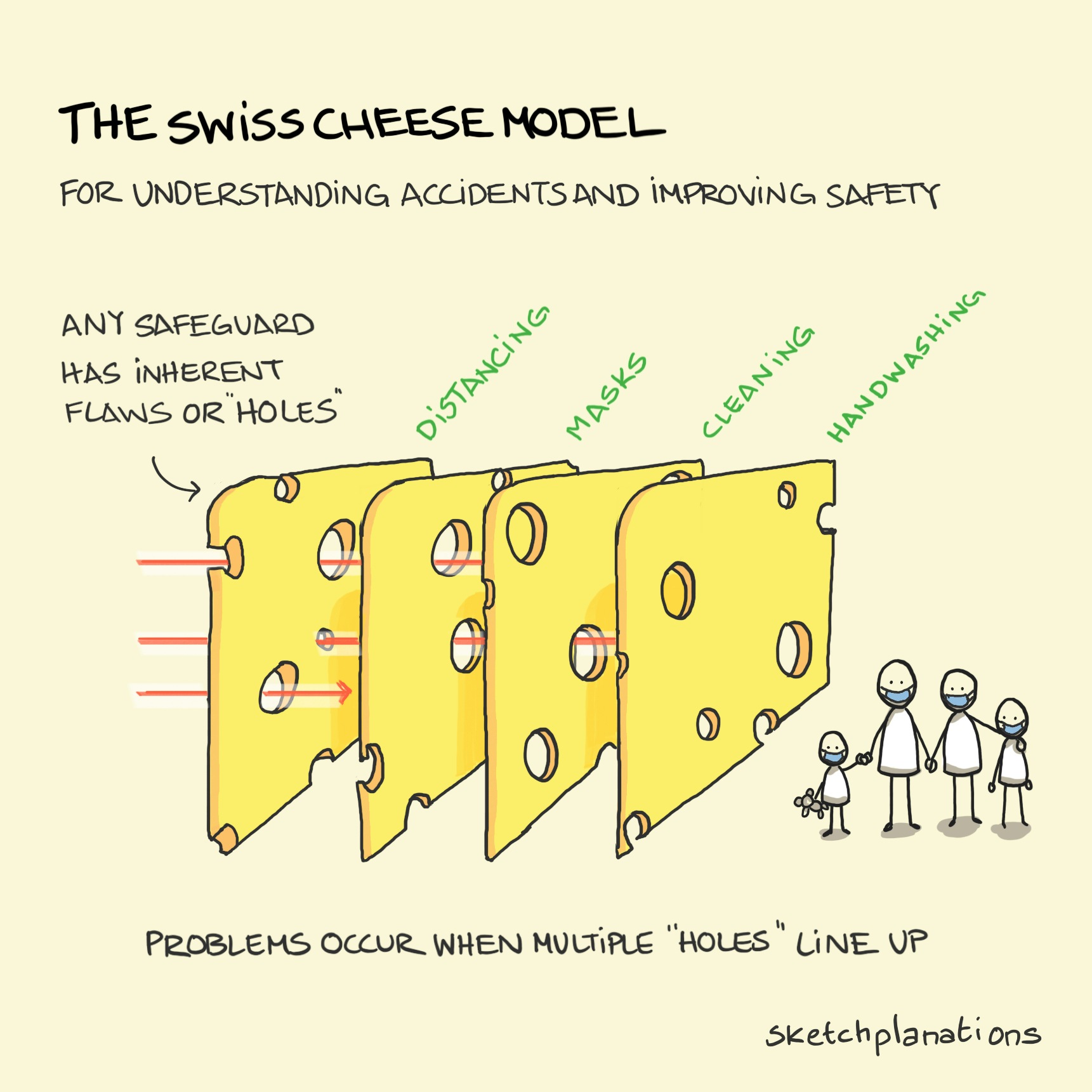The Swiss Cheese Model

- Prints
- Copied!
👇 Get new sketches each week
The Swiss Cheese Model helps explain why, despite all our best intentions, accidents happen.
Analysis of accidents in large complex systems such as power stations or plane crashes led to an understanding that "no one failure, human or technical, is sufficient to cause an accident. Rather, it involves the unlikely and often unforeseeable conjunction of several contributing factors arising from different levels of the system."
James Reason's Swiss Cheese Model is a memorable visual metaphor that illustrates how each safeguard may contain a latent flaw or hole and that an unfortunate circumstance may result in these holes lining up to disastrous effect. It's also a nice reminder that multiple layers of defence will be more effective, but even with our best efforts, there's still potential for something to go wrong.
Excerpt from Revisiting the "Swiss Cheese" Model of Accidents (pdf), Reason, Hollnagel and Paries, 2006.
Coronavirus example from the Cleveland Clinic .
I learned recently that it's sometimes called the "cumulative act effect".
This sketch, updated and polished, features with a number of others in my book Big Ideas Little Pictures.
Also see:

